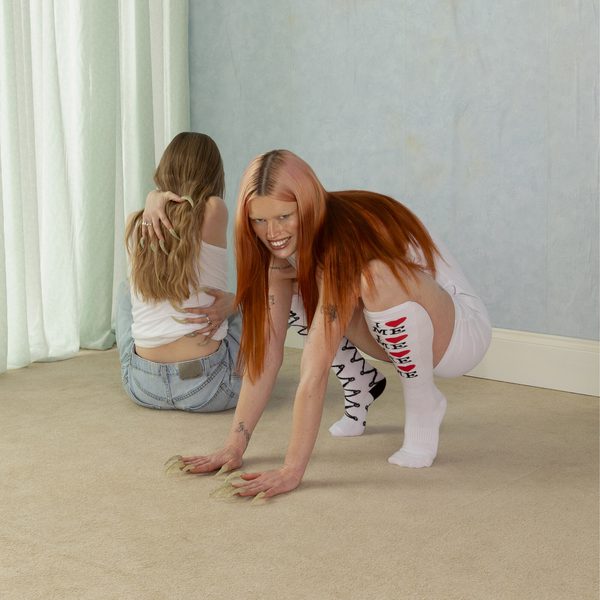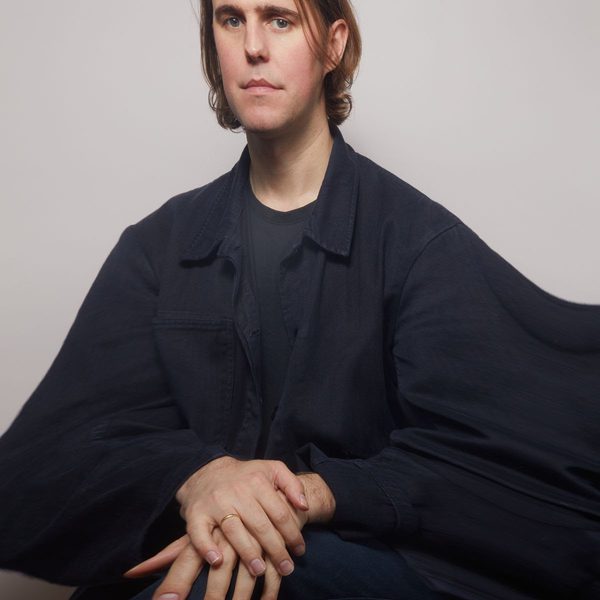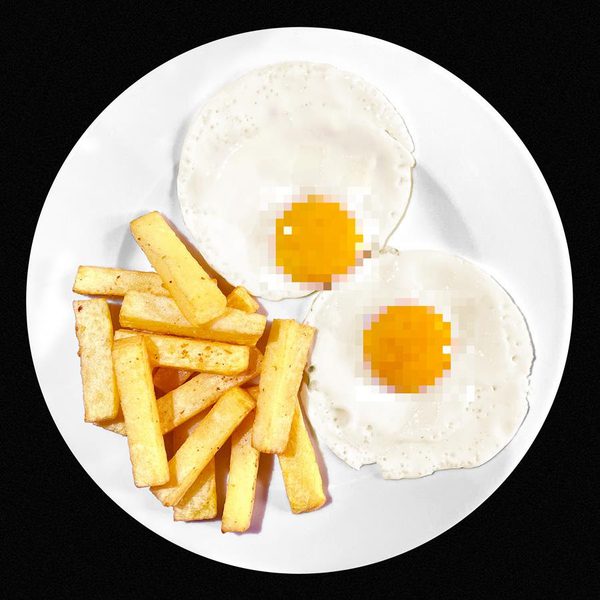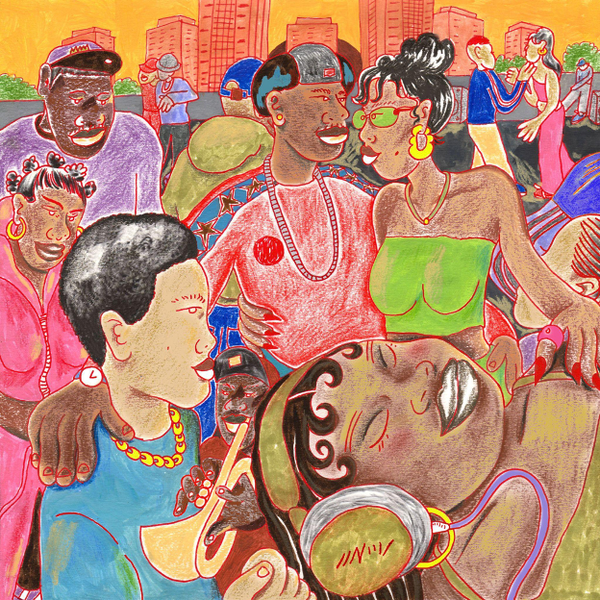
TLOBF Interview :: Richard Skelton (A Broken Consort)
Richard Skelton is an artist from Lancashire in the UK. He started his Sustain-Release Private Press in 2005 as a commemorative tribute to his late wife Louise, with the intention of publishing her artwork alongside his own musical offerings. Since its inception he has released a slew of raw, beautiful recordings presented in lovingly-assembled, individualised editions.
Operating under a variety of guises, including Heidika, Carousell, Harlassen and Clouwbeck, Skelton creates powerful, instrumental music out of densely-layered acoustic guitar, bowed strings, piano, mandolin and accordion, often laced with delicate, shimmering percussion. The result is something utterly unique – a music which is both life-affirming and yet etched with memory and loss, evoking equal parts Arvo Pärt and Ry Cooder, Nick Drake and Henryk Górecki.
It is with A Broken Consort, perhaps, that Skelton most-assuredly draws these elements together, creating an ever-changing drift of rich textures and interleaved melody that effortlessly evokes the landscapes which inspired it. Box Of Birch, his second album in this guise, was originally published in a boxed edition that contained, among other things, birch twigs collected from the West Pennine Moors. For Skelton these things act as a synecdoche for the landscape itself, a physical connection to the places in which much of his music is recorded. In this new edition for Tompkins Square, Skelton has created an exclusive series of artworks which draw on the hidden histories of the English landscape, and their narratives of displacement and loss. The result is something which perfectly complements the music whilst adding another dimension, providing a fuller picture of the artist’s vision.
The opportunity to speak to Skelton was too good to miss, and thanks to Scott McMillan over at Mapsadaisical we fired off some questions via email.
Box Of Birch is being reissued on LP, but it is a few years since it first appeared on CD. Why has it taken so long? How does it feel to listen to it after all these years?
I took a lot of persuading. Mostly, I spent quite a while anguishing over whether to allow the use of Box Of Birch in commercial contexts – syncs, and the like. In the end, due to the album’s provenance, and my reasons for making it, I just didn’t feel comfortable allowing the music to be used in that way. But I think it says a lot about the integrity of Tompkins Square that they came back and agreed to my terms. Not only that, but they gave me complete control over the artwork and format. It was a wonderful moment, a few days ago, listening to the album for the first time on vinyl. Many thanks to Josh, who runs the label, for being so patient and understanding.
The album seemed to be a word of mouth success, with very little promotion. Was this a surprise to you? Did it cause you any problems trying to keep up with demand?
Box Of Birch was the seventh release on my Sustain-Release Private Press. The level of public interest in the label has grown quite slowly and organically, over a period of years. I’m just finalising my fourteenth release, and haven’t really noticed the popularity of one particular album or pseudonym over another. I suppose I’m quite lucky, as people who become introduced to my work through one album seem to then progress onto the others, and like them in equal measure. I’ve also been very lucky in receiving favourable reviews from the Wire magazine in the UK, Blow Up in Italy, and through music websites, including Foxy Digitalis, SentireAscoltare, Mapsadaisical and Evening Of Light.
The album manages to be both minimalist, and dense at the same time. What do you play on it? How was it recorded? Why was it re-recorded for this release?
It’s mainly violin, mandola and guitar, with some piano, accordion and percussion. My aim when recording is always to create a kind of music that brims with life – to capture the uniqueness of each performance, those unrepeatable sounds, and to render something of the physicality of each musical gesture – the whine of horsehair on steel strings, or the resonance of an instrument’s wooden body. Part of this process is also engaged with how musical gestures can be tied to a place; and not just acoustically, but how music can be used as a conduit, or as part of a private ritual. In this way, the resulting sounds bristle with texture and beauty, whilst also becoming the vessel for private meaning.
The reasons why I re-recorded sections of the album are a little more prosaic. Coming back to it for the first time in more than a year, I was able to listen with more detachment, and noticed various technical flaws in the recordings which I felt could be remedied. This mostly involved studio work – equalisation, compression and the like, but some of the original source material simply couldn’t be fixed, and I opted to re-record those sections. But rather than attempt to imitate those original, “unrepeatable”, sounds, I recorded some new improvisations, in the spirit of the original.
Since the initial release of Box of Birch, there have been a lot of recordings under different names – as well as A Broken Consort, also Clouwbeck, Heidika, Carousell. Do the different names have any sort of significance in relation to the music?
I started Sustain-Release as a commemorative tribute to my late wife, Louise, who died in 2004. She was a talented artist, and bequeathed me a legacy in the form of her sketchbooks. The idea for a posthumous collaboration – a blend of my music and her artwork – was the driving force behind setting up the label. The adoption of pseudonyms reflects this collaborative nature of the work, by not identifying me as the sole author. And also, of course, it allows for a more imaginative engagement with the work itself; Clouwbeck, for instance, is much more allusive and evocative than “Richard Skelton”. Pseudonyms, album names and track titles are all narrative layers which add to the richness of the experience. But yes, to answer your question, the names themselves do have private references, and reflect different processes, as well as acting as external signifiers – hopefully you’ll agree that Riftmusic is a different entity to Heidika, for example.
You have also released an album under your own name, “Marking Time” on the Preservation label. Was there a reason for the dropping of the pseudonyms?
Preservation asked me to record something for them back in early 2007. Rather than release an album that I had already published, they asked for something which they could début themselves. It took a while – again, the label was very patient with me – but the album was finally released in late summer 2008. Given that Preservation had their own visual aesthetic, with all artwork being produced by them, it seemed appropriate in this context for the music to be released under my own name. I’ve reverted back to using pseudonyms for my subsequent releases on my own label.
“Marking Time” was the first time you released something on someone else’s label – why was this?
Are you asking why I didn’t release music with someone else before, or why I chose to release through someone else at all? Well, the simple answer is that they asked, and that they were passionate and genuine people. Sustain-Release always has been, and always will be, a small, private press. By keeping things low key, in limited editions, I can have a one-to-one relationship with people who contact me, and make art editions of music & photography that are individualised for each recipient. But by working in this way, it’s necessarily exclusive – and this can become a problem if demand for my work outstrips my ability to produce it. But rather than deny people access to it, surely it’s better to make it available in another form? This is where labels such as Preservation and Tompkins Square become invaluable, as they can produce albums on a much larger scale.
Until recently, the recordings were released in small, personalised “private press” editions, with photography by your late wife, with leaves and seeds, bound together with pieces of straw etc. Is there a strange dichotomy between the seemingly personal and private nature of this work, and now it being released in a larger run on Tompkins Square?
Tompkins Square have been entirely sympathetic to the personal nature of the original work, and have demonstrated their intent to preserve its integrity by allowing me the freedom to create artwork for the new edition. Furthermore, we have an agreement for me to continue selling the album in its original format, in personalised editions accompanied by Louise’s artwork.
For me, the the transition from Sustain-Release to Tompkins Square has been much less fraught than the initial transition from private to public domain. And most difficult of all was the dilemma over turning something loaded with personal significance into a commodity, which the world may consume, absorb or reject. In an economic and cultural climate where it’s difficult to obtain subsidy for art, and where creativity seems only to be valued in monetary terms, it’s a decision that many artists can be forgiven for making without thinking.
The music seems only to be a part of a bigger “package” – how inseparable is it from the photography, the art, the packaging? What does it all mean?
I’m no more a musician than I’m a photographer, filmmaker or writer, although I work in each of those fields. For me, the medium of expression is almost interchangeable – that photograph, that song, that poem – they’re all saying the same thing. In the case of Box Of Birch, and my other editions published through Sustain-Release, the music and art symbolises that desire to perpetuate the memory of Louise’s life, and her creativity. On another level, it also encapsulates the way I respond to music – for me, music and artwork go together, they complement each other and add a reciprocal layer of richness.
I might be in the minority with regard to this, but there’s also something about a physical, tactile object which bestows a sense of weight and purpose. It has a beauty and integrity which cannot be ignored. Music is essentially aetheric and temporal, but the physical artefact grounds it in reality, creating a landscape for the music to inhabit. Moreover, with my personalised editions, the package feels very much like a gift, creating a connection between myself and the recipient. Consequently, many people write to me, describing their emotions upon receiving, opening and playing the music, and responding to the artwork.
Clearly, most people nowadays don’t experience music in such a ritualised way, and eventually a whole generation will consume music entirely through digital means, and never bemoan the passing of physical formats. Having said that, the proliferation of “tape” labels recently seems to indicate the resurgence of certain diy aesthetic, and a form of rebellion against the ubiquity of the MP3. Ironically, many of the kids making these tapes weren’t here to experience them the first time around, so perhaps they represent something of a novelty. And of course Tompkins Square releasing a lavish vinyl version of Box Of Birch represents a more elegant contribution to the object-fetish subculture. Perhaps these formats won’t completely die out after all, if they continue to be produced with such passion and dedication?
With Box of Birch, and even more so with the Landings diary and recordings, how separable is it from the geographical location? What is it about the bleak landscapes of Anglezarke that you found so inspirational?
I’m not sure why I was drawn to that particular landscape, although I’ve felt its call at various times during my life, and ever more so recently – pulled into its vortex, limning the borders of its fields, its woods and streams. I couldn’t explain it to you. Perhaps we don’t consciously choose these things, and instead are chosen? Whatever the reason, I felt compelled to play music in this landscape – I’d get up at 5 or 6am, drive out to the moor and play guitar, violin or concertina in the ruins of old farmhouses, as the morning light began to blush over the moor.
As time progressed, the idea of recording this process became important, and I started pressing individual CDs, packaging them in little boxes, and returning them to the place where the music was played. It was a private gesture – these things were, and still are, hidden. I didn’t want anyone to discover them. By this time, I’d started Sustain-Release, but wanted to keep this other activity, which I called “Landings”, quite separate. But eventually the lines began to blur, as more and more I began to feel the influence of the landscape on my studio work.
Box Of Birch represents the coming together of these two strands, being composed of a blend of studio and outdoor recordings. And just as I’d previously deposited boxes with music and natural ephemera out there in the landscape, so I packaged the first edition of the album in a small box with birch twigs wrapped in linen. At about the same time, I began to publish my hitherto private writings about the landscape online, in the form of a “Landings Diary”.
As to the question of geographical location, I was initially quite dogmatic about making all my Landings recordings in the field. I felt that the connection between the landscape and the music was only valid if the recordings were made in situ. I somehow wanted the landscape to impress itself onto the recordings directly, and felt that simply adding a flavour of the environment (bird song, river sounds etc) to studio recordings would be a kind of trickery. But after a few years of recording in this way, I became increasingly dissatisfied with the results themselves. My memory of events often conflicted wildly with the recorded documents, and what’s more, many of them were marred by the intrusion of unwanted sounds, such as wind or traffic noise.
I then began to observe how my writing about the landscape wasn’t contingent on proximity, and that, if anything, I could write more clearly when away from the place of inspiration. Increasingly, I began to visit the moor without instruments, simply to experience it. I began to realise that my music making had mediated my previous experiences of the landscape – that in some ways it was an intrusion, and that I needed to witness these places alone, devoid of the props of my art. Furthermore, I realised that I could still represent Anglezarke in my recordings – in miniature, by using the small stones, bark and other natural ephemera which I’d collected from my previous visits. These things could act as a synecdoche for the landscape, as well as physically colluding with my instruments, by being used as plectra, or as sound sources in their own right.
What forthcoming projects do you have – tell me more about “Crow Autumn 2″, the Landings Diary book/CD – tell me more about those.
“Crow Autumn Part Two” is the imaginatively-titled follow up to “Crow Autumn”, which was itself the follow up to Box Of Birch. It’s my fourth release as A Broken Consort, and sees the music becoming more drawn out and orchestral, with many interleaved layers of bowed melodies, underpinned by accordion billow and piano chimes. I’m also just about to release an album of Carousell music, entitled “Black Swallow & Other Songs”. By contrast, Carousell is much more sparse and obviously melodic, with most songs lasting four or five minutes.
Next month will hopefully see the release of an album of Landings recordings, under my own name, along with a book which collects various diary entries, poems and observations. I’m really looking forward to it, as it’s the culmination of four years work, and in many ways represents the ending of one chapter, and the beginning of something new.
Any plans to try to play some of this live?
Playing live is a difficult proposition on my own – it’d probably necessitate some kind of laptop performance, which I’m quite ambivalent about. Perhaps if I could incorporate a visual element, such as a film or photographic stills, then it’d sit we me better – otherwise I’m just not convinced that people would want to watch me gazing intently at a computer screen for 40 minutes. The only other option would be reduce the density of the sound down to something that I can comfortably recreate on my own, or to enlist the help of other musicians. I’ve done the latter a few times now, and it’s always been a really productive, enjoyable experience, but I’ve always been uncomfortable telling people what to do. I’d much rather play music with others on equal terms, rather than have them “play my music”. We’ll see. Hopefully something will work itself out.
Get the Best Fit take on the week in music direct to your inbox every Friday

Wet Leg
moisturizer

MF Tomlinson
Die To Wake Up From A Dream

BIG SPECIAL
National Average





